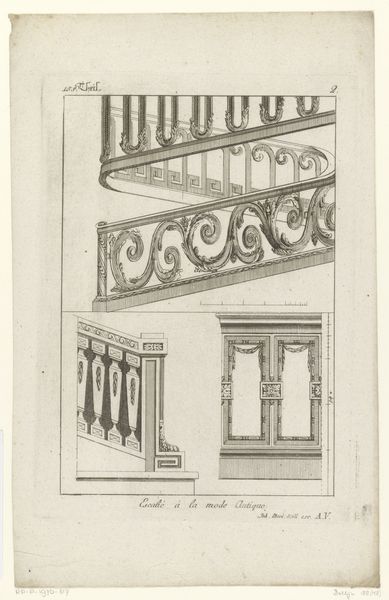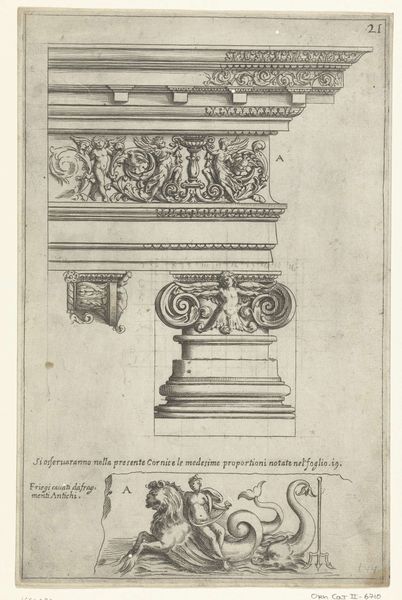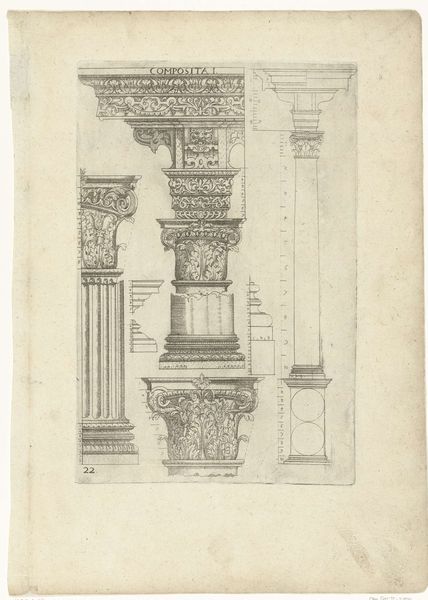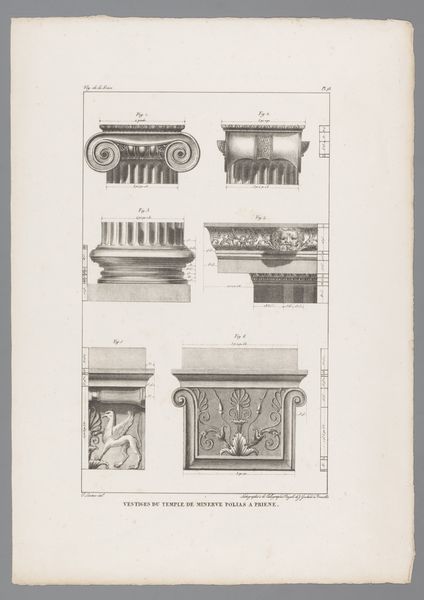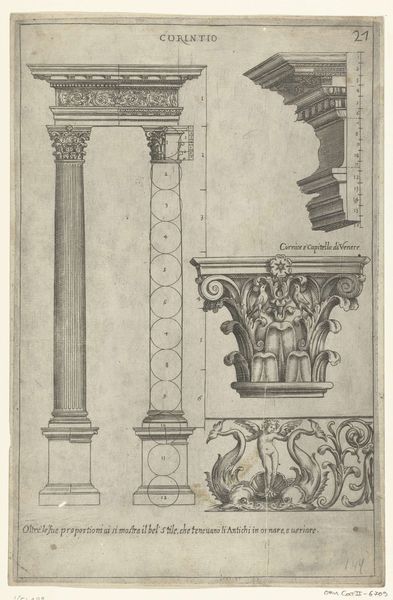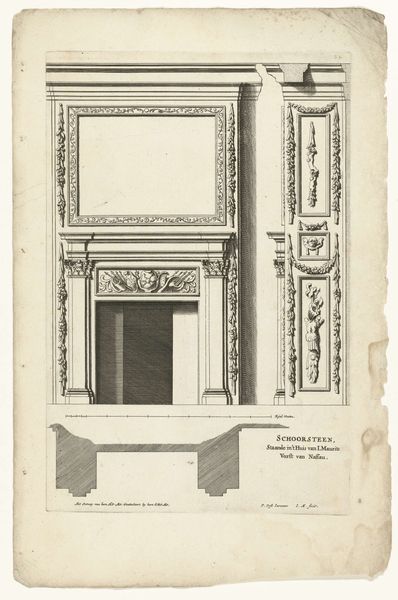
drawing, print, engraving, architecture
#
drawing
#
baroque
# print
#
form
#
geometric
#
line
#
14_17th-century
#
academic-art
#
engraving
#
architecture
Dimensions: height 277 mm, width 178 mm
Copyright: Rijks Museum: Open Domain
Editor: Here we have an engraving from 1636 titled "Vier Dorische hoofdgestellen," which translates to "Four Doric Entablatures," made by an anonymous artist. It’s striking how academic and precise the lines are. What historical context should we consider when viewing this? Curator: The precision isn't just about aesthetics; it reflects a revival of classical ideals during the Baroque period. The Doric order, one of the oldest in classical architecture, was associated with strength and masculinity. What happens when we view these “fragments” – as the inscription suggests – through the lens of gender? How were these ideals weaponized to reinforce power structures? Editor: That’s a fascinating perspective. I had initially seen these drawings as purely technical studies, but the emphasis on the Doric order, the suggestion of “strength," makes me reconsider its purpose. Curator: Exactly! Consider the cultural obsession with measuring and codifying the past. Who was given access to knowledge and how might such studies of antiquity impact or inform gender roles? Who gets to define "masculinity," and what does that exclude? Look at the almost clinical detachment in the rendering. Does that neutrality really exist, or does it perform a specific kind of authority? Editor: So, the print isn't just documenting Doric capitals; it’s participating in a larger cultural project? One that perpetuates specific values and beliefs? Curator: Precisely. And, by understanding that, we can begin to question its assumptions. Editor: That’s given me a completely new way to think about this. I came in expecting formal analysis, but I’m leaving with a deeper understanding of the social impact an image like this might carry. Curator: And that's the power of engaging art from an intersectional perspective. It pushes us to question what seems self-evident.
Comments
No comments
Be the first to comment and join the conversation on the ultimate creative platform.


